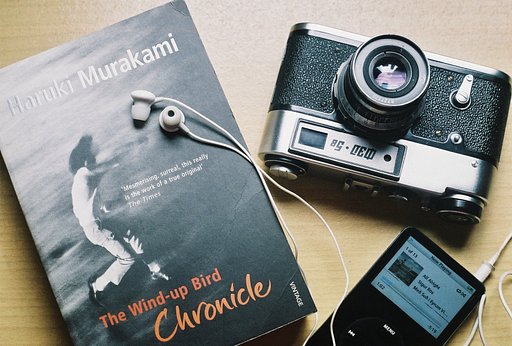In Depth: The Fertile Soil In The Land Of Exile
5 6 Share TweetChains force us to think deeper about what we want to say and what we want to do. If you claim the right to speak, you have to sharpen your communication skills. When we cannot be direct, to express a concept is like writing a symphony, there are different stages that get you to the climax. Therefore mastering the art of cognitive layers is practiced with patience and perseverance.
You must learn to evaluate what is important and what is the best way for a message to get through. There is a delicate balance between the message, the messenger, and the medium. Often we have a hard time understanding work of contemporary photography. Nevertheless, it is crucial to look carefully into all the elements shown in a picture and observe beyond the looking.

In Qajar by Shadi Ghadirian, portraits of Iranian women are arranged with elements from the past such as traditional clothing intertwined with modern objects. She explained how her inspiration came about:
"I was fascinated by pictures of the Shah's many wives: he would dress them up in Iranian versions of the tutu – another import, after a trip to the ballet in Paris – or photograph them nude. Islamic tradition would not even allow women's faces to be seen, so this was really radical and surprising. When I graduated, I started working on a project inspired by those photographs." Shadi Ghadirian extract from The Guardian
The juxtaposition of what is allowed and what is not creates a tension, and confronts us with the need to question the concept of freedom and time. What we take for granted should not be considered permanent. The everyday objects used in the images symbolize the stereotypes that shackle the role of women in Iran, and in many parts of the world. There are also objects from the West, symbolizing technological advances and the evolution society is making toward consumerism. In her work Like Everyday, through portraiture, the artist elevates images with humor and satire to denounce the condition to which women are relegated.
"I believe that if those who choose art to express their inner self, feel they have to do so with their gender in mind, they would never progress in their art -- and that is not right. So when I write, if I keep thinking, oh I'm a woman and I must address feminine issues rather than human issues, then that is a kind of stopping and self-destruction." – Forugh Farrokhzad
But looking at these works, we cannot help but see human nature relentlessly overcoming obstacles. When a work of art becomes activism, it is astonishing to admire the intricate relationship between restriction imposed on the freedom of expression and the proliferation of meaningful art that touches us deeply. In contemporary photography, the meaning that accompanies a work is arguably as important and central as much as the work itself. This is why the message conveyed in a work of art is often what frightens those who want to silence it.
Yet there are those who, despite all the risks, feel the need to rebel and speak out. Art has the potential to transcend the boundaries of a state, and that is its power. In one individual’s idea, you can find millions of people who feel the same way.

Shirin Neshat an Iranian visual artist who between 1994 and 1997, worked on Women of Allah. The artist has been living in the USA since 1975 after arriving there to complete her studies. She never returned due to the 1979 Islamic revolution. After 20 years she was finally able to visit her home. and upon returning from this visit to the USA, she created a series of black and white images with text included, that reflects on the role and status of women, religion, exile, and femininity.
It is through this journey to her homeland, then returning to the West, that her question of identity reinvigorated her work. The experience left a mark on her and her disbelief after witnessing the changes her homeland had undergone caused internal turmoil. She credits this experience with enabling her to find her voice, and raising questions about the political and social oppression that especially affects women.
When looking at these images there is an immediate emotional impact. The written word represents an obstacle for the non-speaker, while the presence of a gun is a visual symbol that can be understood. Humans understand violence very well, but it is not as easy to pick up a pen. Therefore perhaps the true weapon is the written words, which is what people in power also fear.
It’s the female at the center of this portrait that drives the scene. There is no fear or submissive attitude in her expression. The layers unfolding in Neshat’s work push the viewer for an honest introspection, whether they are in the West or the East, challenging each side of the world.
It is worth considering the concept of statehood to be perhaps a part of the multitude of all the things that form our identity. All the external elements that affect us will inevitably become part of the cultural baggage that an artist carries with him or her. Therefore where they were born, who their parents are, where they are right now, the experiences they go through during their lives, are all elements that influence a work of art.
You can follow the work of Shadi Ghadirian here and of Shirin Neshat here.
written by eparrino on 2024-01-07 #in-depth #woman #freedom #life #iran #women-artists #shadi-ghadirian #shirin-neshat
















5 Comments